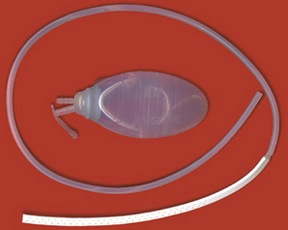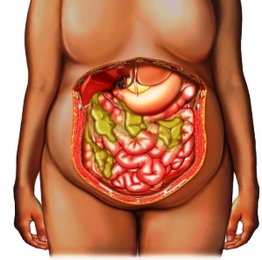Jackson-Pratt drain, JP drainage: what is the procedure, causes, Contraindications, how they do it, what after

Description Jackson-Pratt drain
Jackson-Pratt drain consists of a thin rubber tube, inserted into the soft, a round container with a stopper. Drainage used, to remove the liquid, which can collect in the body after surgery, infection or injury.

Reasons for Jackson-Pratt drain
Fluid, collected in the body can increase the chance of infection or other complications. Jackson-Pratt drain is placed usually after some types of transactions, If you do not expect a large amount of drained liquid. Besides, Jackson-Pratt drain is often used to drain an abscess in the abdomen.

Possible complications during drainage Jackson-Pratt
Complications are rare, but no procedure does not guarantee the absence of risk. If you plan to drain Jackson-Pratt, you need to know about possible complications, which may include:
- Bleeding;
- Infection.
How is the Jackson-Pratt drain?
Preparation for the procedure
In the run-up procedure:
- If you have been injured, your doctor may order tests of medical imaging, to detect fluid accumulates. These tests may include:
- Consult your doctor about the drugs taken. A week before surgery you may be asked to stop taking some medicines:
- Anti-inflammatory drugs (eg, aspirin);
- Blood thinners, such as clopidogrel (Plaviks) or warfarin;
- Do not eat or drink for eight hours before surgery;
- We need to organize a trip home from the hospital after the procedure.
Anesthesia
At step used general anesthesia, which blocks the pain and the patient support in sleep.
Procedure Jackson-Pratt drain
After the start of the anesthesia doctor makes an incision in the skin. In the area of accumulation of fluid injected tube. The other end of the tube is connected to a squeezable container pear. The doctor will remove the stopper from the container, compress it, to create a suction pressure (vacuum) in the drainage system and closes the plug. The negative pressure will suck the unwanted fluid from the body. In the introduction the drain tubes the doctor sews up the skin.
If the operation is carried out, Jackson-Pratt drain is installed after the.
Immediately after treatment
If you are in the hospital, A nurse will be periodically removed fluid.
How long will the Jackson-Pratt drain?
15-20 minutes, to accommodate drainage Jackson-Pratt.
Jackson-Pratt drain – Will it hurt?
It may feel mild to moderate pain at the site of installation of drainage Jackson-Pratt. The doctor will give pain relievers to reduce discomfort.
The average hospital stay
Jackson-Pratt drain shall be conducted in a hospital environment. The length of stay depends on the type of an operation. You will be able to go home the same day, If the wire is a simple operation.
Care after drainage Jackson-Pratt
When you return home, Follow these steps:, to ensure the normal recovery:
- Be sure to follow your doctor's instructions;
- Find Out, how to clean and care for the drain at home;
- Ask the doctor, whether to go with drainage Jackson-Pratt;
- Avoid pressure on the drain;
- Sleep on the side, protyvopolozhnoy drainage. This will help to avoid blocking the tubing or a loss of drainage area;
- Ask the doctor, when it is safe to shower, bathe, or to expose the surgical site to water;
- Ask the doctor, after the occurrence of any problems to come to the reception.
Removal drainage depends, how fast is the recovery after surgery or injury. The doctor may remove the drain, when it is going to less 15-30 ml fluid per day. If more than one drainage, They can be removed at various times.
Communication with a doctor after Jackson-Pratt drainage
After discharge from the hospital need to see a doctor in the following cases:
- You do not know, how to care for drainage;
- Exude, which has an unpleasant smell or greenish color;
- Significant bleeding from the installation site drainage;
- Pain in the incision area;
- Fever or chills;
- The end of the tube falls out of the cut.
